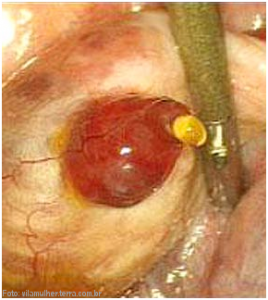All women are already born with their eggs, unlike men who produce their sperm periodically, with a production cycle that takes approximately 3 days. But do you know how ovulation occurs and how you can tell when you are ovulating?
Egg Release
Normally, the body can give signs of ovulation. The eggs are released monthly, one or two at a time, and they may or may not be fertilized. Once fertilized, they may become an embryo or simply be eliminated through menstruation without us women noticing. Only women who pay very close attention to their cycle and the signs the body gives are able to notice ovulation. Ovulation usually happens once during the cycle and, moreover, the fertile period can change from one body to another and even from cycle to cycle. An important tip is to include the use of ovulation tests in your routine to make it easier to detect ovulation in order to conceive.
The ovary creates follicles that act as a sort of shell to house the egg and protect it so it can mature and be released. During this time, there are hormonal changes in our body. In the first phase, estrogen is secreted, and in the second phase, it’s progesterone’s turn. Both hormones are stimulated to be secreted by the pituitary gland—a gland located in the brain—and have a great influence on ovulation.
Phases of Egg Maturation
After the egg matures, the follicle ruptures and then releases the egg so it can travel to the fallopian tubes, where fertilization will occur. This process is called implantation. This is an image of the exact moment when ovulation occurs, which was captured by a doctor during surgery to remove the uterus from a 45-year-old woman.
After this event, the follicle becomes a corpus luteum, and then it starts maintaining the supply of progesterone that is necessary for the endometrium to thicken so it can receive the zygote (fertilized egg).
If the zygote attaches to the endometrium, which should be about 5 or 6 cm thick, pregnancy will occur, and then the zygote will divide into two parts: one becomes the placenta, and the other part becomes the much-awaited baby. If this doesn’t happen, the zygote is eliminated in the menstrual period without the woman even realizing what happened.
Pregnancy Symptoms
Some women may experience pregnancy symptoms as soon as ovulation occurs, since progesterone is a hormone common both in pregnancy and after ovulation. To be sure these are really pregnancy symptoms, you need to wait for your period to be late and then take a pregnancy test to confirm.
See also: Ovulation symptoms and their signs.
_
Key Information Box:
- All women are already born with their eggs, unlike men who produce their sperm periodically, with a production cycle that takes approximately 3 days.
- The ovary creates follicles that act as a shell to house the egg and protect it so it can mature and be released.
- After the egg matures, the follicle ruptures and thus releases the egg so it can travel to the fallopian tubes, where fertilization, known as implantation, takes place.
- If the zygote attaches to the endometrium, which should be about 5 or 6 cm thick, pregnancy occurs and the zygote will divide into two parts: one part becomes the placenta and the other part the much-loved baby.
- Some women may experience pregnancy symptoms as soon as ovulation occurs since progesterone is a hormone common both in pregnancy and after ovulation.













